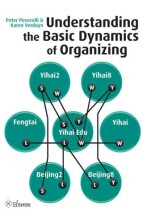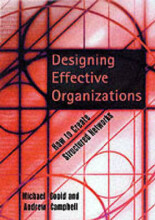Summary: Articles, Notes And Slides
- This + 400k other summaries
- A unique study and practice tool
- Never study anything twice again
- Get the grades you hope for
- 100% sure, 100% understanding
Read the summary and the most important questions on Articles, notes and slides
-
1 Introduction course (slides 1)
This is a preview. There are 5 more flashcards available for chapter 1
Show more cards here -
In the definition of organizational change a difference in form, quality or state is the key. Define those three concepts:
1 Form = a particular way in which a thing exists or appears
2 Quality = a distinctive attribute or characteristic possessed by someone or something
3 State = the particular condition that someone or something is in at a specific time -
What is meant with the process of change?
Generally addresses actions undertaken during the enactment of an intended change, taking place at the external environment, firm and individual levels. -
What is meant with the outcomes of change?
Concerns the nature of criterion variables commonly assessed as outcomes of change (f.e. survival/profitability and affective/behavioral criteria) -
A lot of changes fail, why? Fail to change in the first place, because of... (3)
1 Fixed routines and mindsets
2 Fear of uncertainty and risk
3 Little environmental scanning (no openness to change or mindfulness during changing circumstances) -
Why do changes fail? Failure of realizing planned change because... (4)
1 Following short-term fashions
2 Underestimating change
3 Rush through (pace and timing)
4 Not systematically working through change program -
Name /explain three other phenomena that make change fail:
1 Groupthink (Porac)
2 Hot stove effect (cat jumps on a hot stove: never jumps again, also not when it's cold: that's not good)
3 Competency trap: learning encourages people to stick to and improve skills they already have, rather than spending time and effort gaining new skills. -
Summarize why changes fail (5)
1 Failure to change in the first place (f.e. fixed routines/mindsets)
2 Failure of realizing planned change (f.e. rush through)
3 Group think
4 Hot-stove effect
5 Competency trap -
2 Beer: Cracking the code of change
This is a preview. There are 10 more flashcards available for chapter 2
Show more cards here -
Business change either quickly to create economic shareholder value, OR patentiently develop an open, trusting, corporate culture long term. Most change initiatives fail. Why is that according to Beer?
Manager's rush to change their organizations, they lose focus. Too many advice available online etc. To improve the odds of success, executives must understand the nature and process of corporate change: they need to crack the code of change. -
All the changes are unique, but Beer suggests that there are two archetypes/theories of change. Those archetypes are based on very different and often unconscious assumptions by senior executives about why and how changes should be made. Explain the 2 theories.
-Theory E: change based on economic value.
-Theory O: change based on organizational capability. -
Explain Theory E of Beer: change based on economic value?
In this hard approach to change, shareholder value is the only legitimate measure of corporate success. Change usually involve heavy use of economic incentives, drastic layoffs, downsizing, and restructuring. E change strategies are more common than O strategies among US companies.
- Higher grades + faster learning
- Never study anything twice
- 100% sure, 100% understanding
Topics related to Summary: Articles, Notes And Slides
-
Beer: Cracking the code of change
-
Kotter: Leading change: why transformation efforts fail
-
Porac: Competitive groups as cognitive communities: the case of Scottish knitwear manufacturers
-
Thornton: Institutional logics and institutional change in organizations: transformation in accounting, architecture and publishing
-
Daunno: The role of institutional and market forces in divergent organizational change
-
Rao: Institutional change in Toque Ville: Nouvelle cuisine as an identity movement in French gastronomy
-
Marquis: Vive la resistance: competing logics and the consolidation of US community banking
-
Crossan: Organizational learning and strategic renewal
-
Levinthal: crossing an apparent chasm: bridging mindful and less-mindful perspectives on organizational learning
-
Ahuja: Entrepreneurship in the large corporation: a longitudinal study of how established firms create breakthrough inventions
-
Recap: slides
-
Weick: The collapse of sensemaking in organizations: the mann gulch disaster
-
Ravasi: Responding to organizational identity threats: exploring the role of organizational culture
-
Corley: Identity ambiguity in the wake of corporate spin-off
-
Cornelissen: Imagining and rationalizing opportunities: inductive reasoning and the creation and justification of new ventures
-
Sonenshein: Were changing - or are we? Untangling the role of profressive, regressive, and stability narratives during staretgic change implementation
-
Garvin: Change through persuasion































